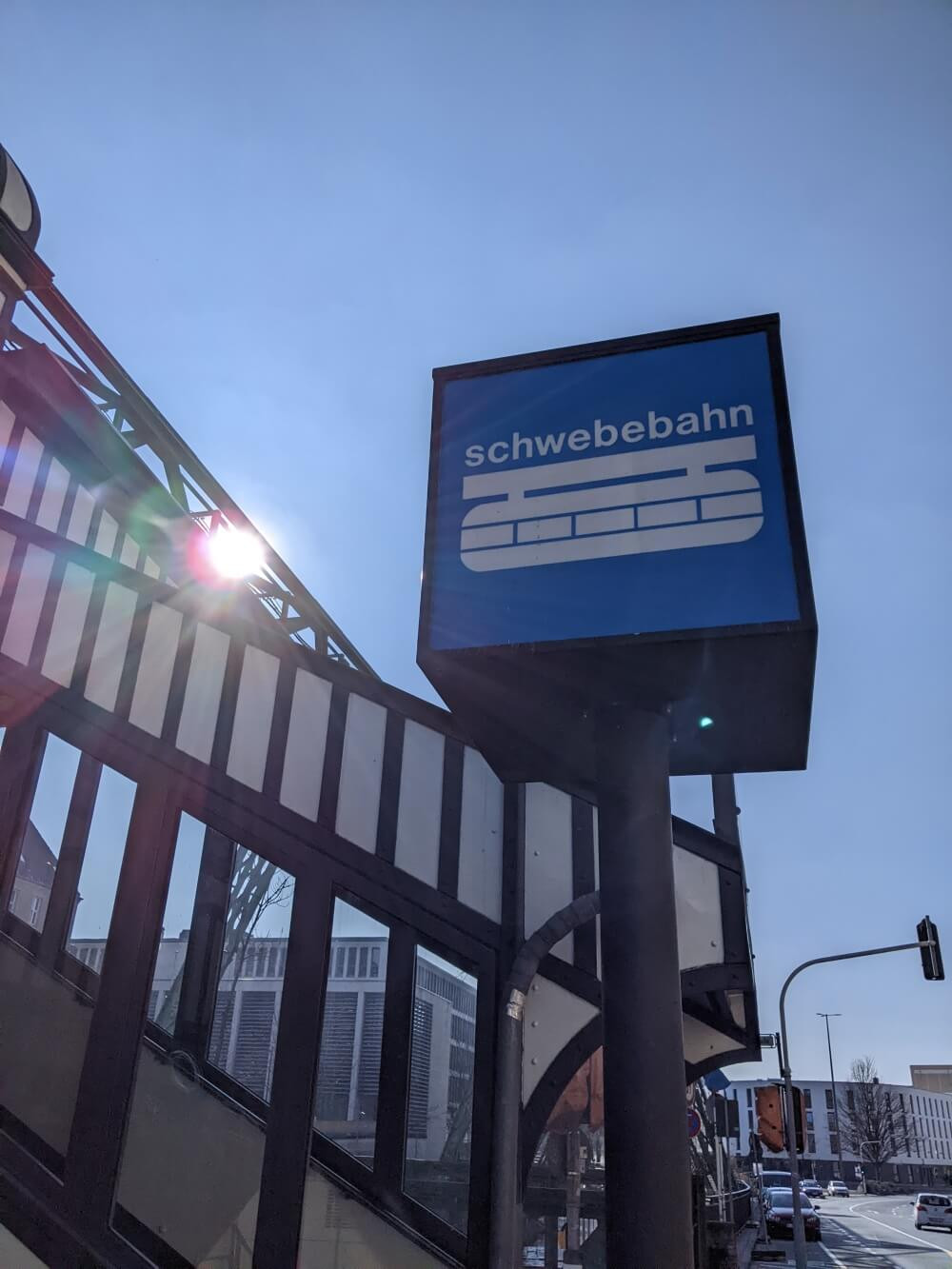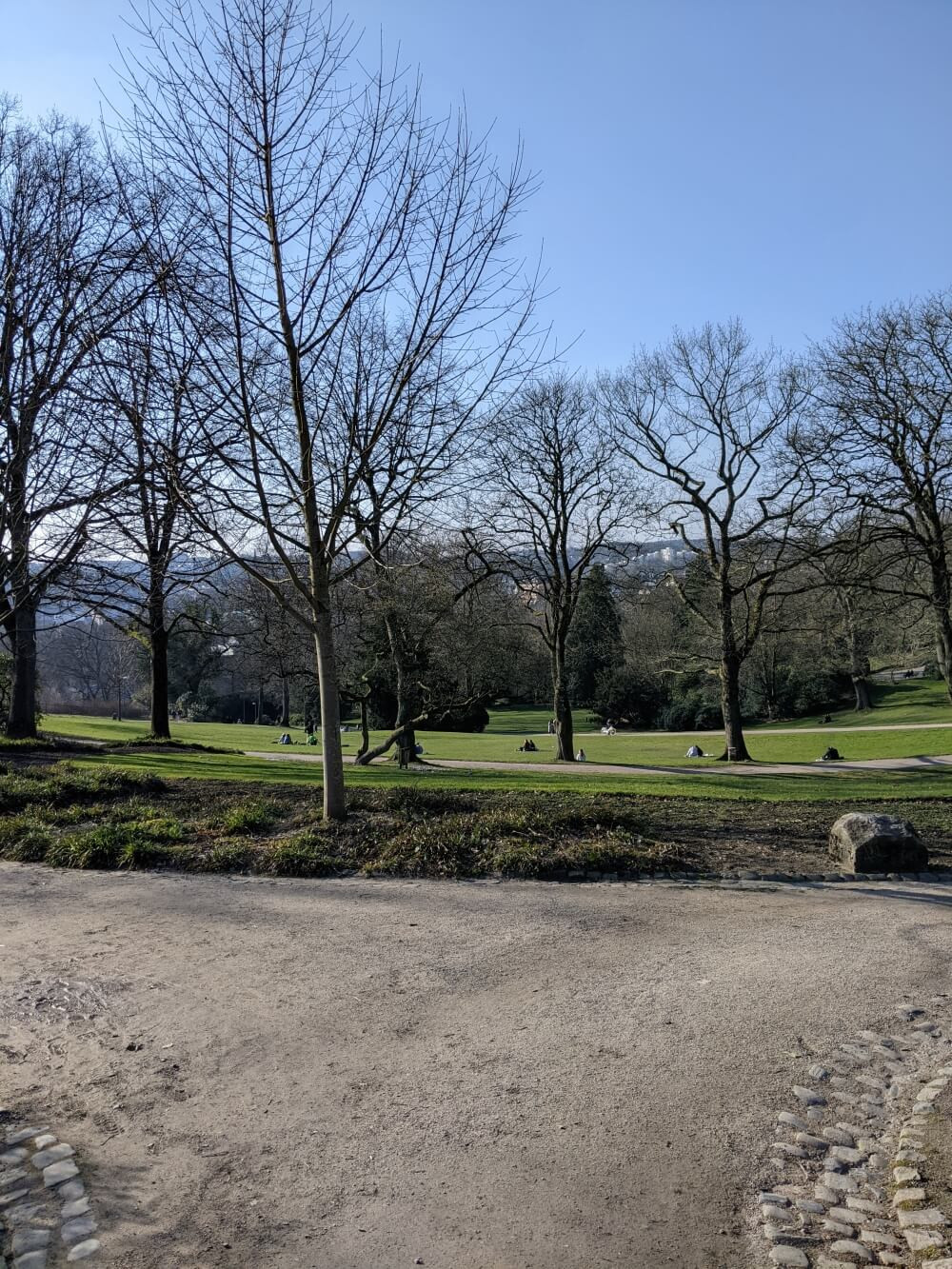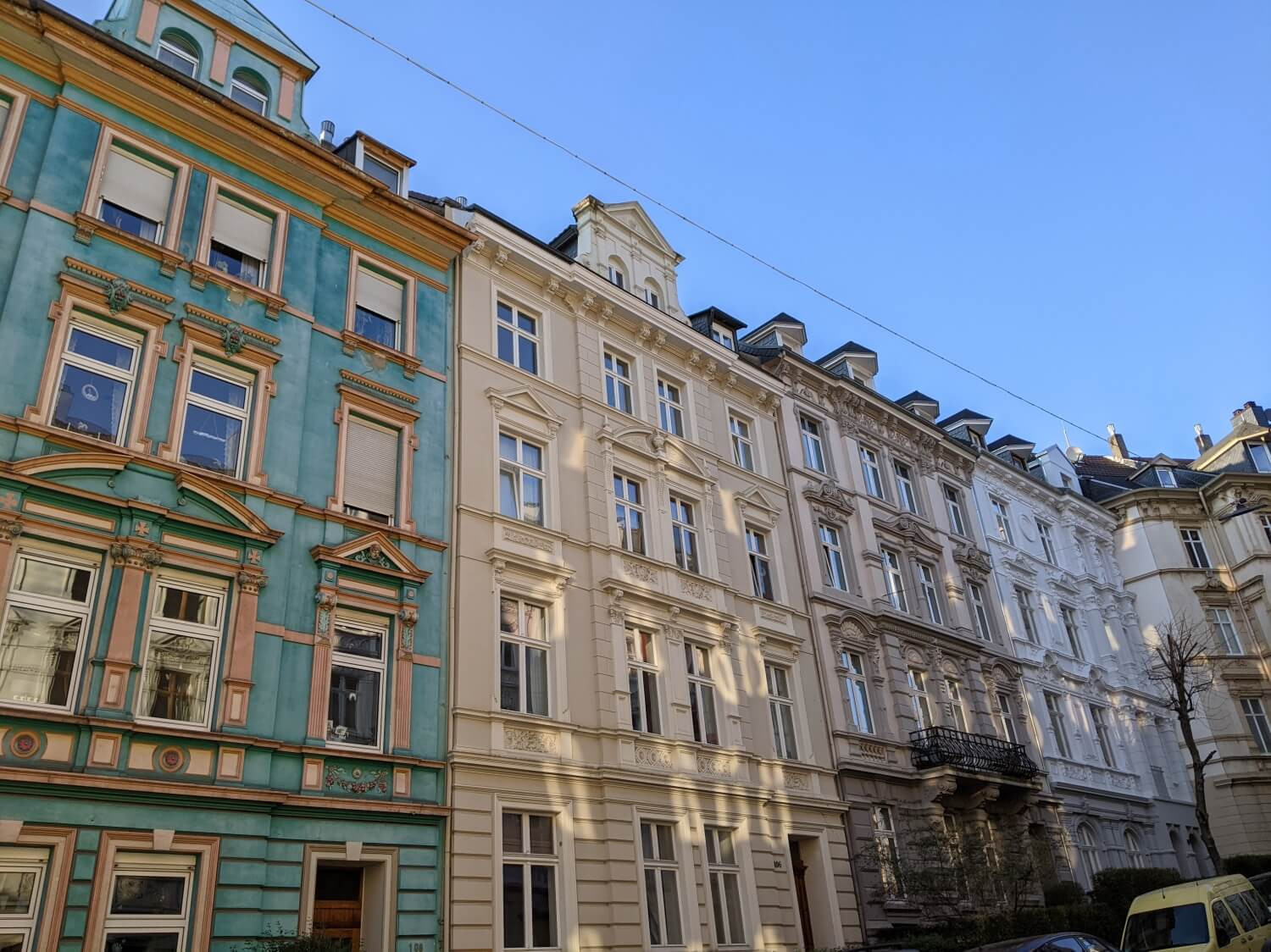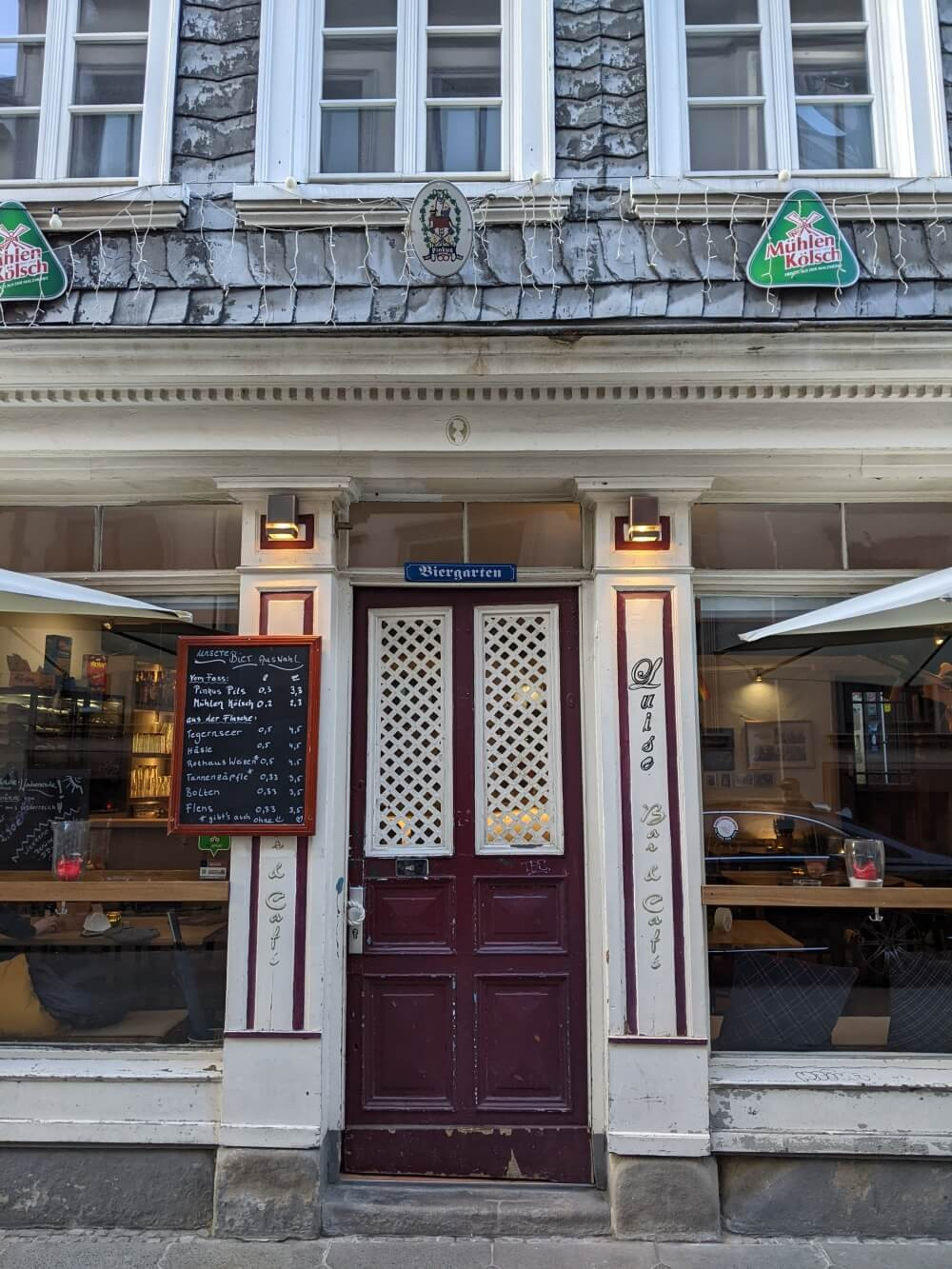Wuppertal, Germany tourism offers a unique travel experience, blending industrial history with surprising natural beauty. SIXT.VN can help you explore this fascinating city with ease, providing convenient transportation, comfortable accommodations, and curated tours to make your visit unforgettable. Discover Wuppertal’s iconic suspension railway, lush green spaces, and vibrant cultural scene with our expert travel services. Consider SIXT.VN your key to unlocking the best of Wuppertal, providing local insights and seamless travel planning for your German adventure.
1. Discovering Wuppertal: More Than Just a Suspension Railway
Wuppertal, Germany, is more than just its famous Schwebebahn. While the suspension railway is a must-see, the city offers a rich blend of industrial history, green spaces, and cultural attractions that make it a worthwhile destination for tourism.
- Historical Significance: Wuppertal’s industrial past has shaped its unique character.
- Green Spaces: Claimed to be one of Germany’s greenest cities, offering numerous parks and gardens.
- Cultural Attractions: A vibrant arts scene, historical architecture, and local festivals await.
2. What is the history of Wuppertal, Germany and how does it influence tourism?
Wuppertal’s history as an industrial center and its unique urban development greatly influence its tourism appeal, offering a blend of historical landmarks and cultural experiences.
Wuppertal came into existence in 1930 through the merger of five towns, resulting in a long, pluri-centric layout nestled between hills along the Wupper River. This unique formation led to the creation of the Schwebebahn in 1901 to connect these disparate towns. While known for its industrial history, Wuppertal also boasts a claim as Germany’s greenest city due to its abundant green spaces. This blend of industrial heritage and natural beauty provides a distinctive backdrop for tourism, attracting visitors interested in historical landmarks like the Schwebebahn and the city’s numerous parks and gardens. According to the Wuppertal Marketing GmbH, the city’s historical narrative and green initiatives are key attractions for tourists seeking a diverse experience.
3. Exploring Wuppertal’s Icon: The Schwebebahn
The Schwebebahn is not just a mode of transport; it’s a symbol of Wuppertal. Riding this unique suspension railway is an essential experience for any visitor.
- Historical Significance: Opened in 1901, it’s one of the oldest suspension railways in the world.
- Practical Transport: Still actively used as a part of the city’s public transportation system.
- Tourist Attraction: Offers unique views of the city and the Wupper River.
 Schwebebahn signage
Schwebebahn signage
3.1. What is so special about the Schwebebahn?
The Schwebebahn is special because it is a unique and historic suspension railway that offers a distinctive travel experience and is a symbol of Wuppertal.
The Schwebebahn is unique because it is the oldest operating electric elevated railway with hanging cars in the world. Built in 1901, it is more than just a means of transportation; it is a historical landmark and a symbol of Wuppertal’s innovative spirit. The railway’s hanging design offers passengers unique views of the city and the Wupper River below, making it a must-try experience for tourists. According to the Wuppertal public transport authority, WSW Mobil GmbH, the Schwebebahn transports over 25 million passengers annually, highlighting its significance as both a functional transit system and a major tourist attraction. Its historical importance and distinctive design set it apart from conventional transportation systems, making it an iconic feature of Wuppertal.
3.2. How to ride the Schwebebahn for the best experience?
For the best Schwebebahn experience, ride the entire length of the line, sit at the back for optimal views, and consider purchasing a day ticket for unlimited rides.
- Full Ride: Travel the entire route to experience the full scope of the railway.
- Best Views: Sit at the back of the train for the most scenic perspectives.
- Tickets: Purchase a day ticket if you plan to ride multiple times.
3.3. What interesting events happened on the Schwebebahn?
One of the most famous events on the Schwebebahn was the 1950 incident where a baby elephant named Tuffi fell into the Wupper River during a publicity stunt but survived.
In 1950, a circus organized a publicity stunt involving a baby elephant named Tuffi riding the Schwebebahn. During the ride, Tuffi became frightened and fell out of the carriage into the Wupper River below. Miraculously, the elephant survived with only minor injuries. This event has become a legendary part of Wuppertal’s history, celebrated with memorabilia, a mural, and a plaque. According to local historians, the Tuffi incident has contributed to the Schwebebahn’s iconic status, adding a touch of whimsy and notoriety to the railway’s long history.
4. Discovering Green Spaces: The Hardt-Anlagen
Escape the urban hustle and discover Wuppertal’s green heart at the Hardt-Anlagen, offering beautiful gardens, scenic views, and tranquil spaces for relaxation.
- Botanical Garden: Explore diverse plant species and beautiful landscaping.
- Scenic Views: Enjoy panoramic views of Wuppertal from the park’s elevated location.
- Café Elise: Relax and enjoy refreshments in a charming setting.
 Hardt-Anlagen
Hardt-Anlagen
4.1. What makes the Hardt-Anlagen a must-visit park?
The Hardt-Anlagen is a must-visit park due to its combination of botanical gardens, historical landmarks, scenic views, and tranquil atmosphere.
The Hardt-Anlagen offers a diverse experience, combining a botanical garden with a variety of plant species, historical landmarks such as the Bismarck Tower, and panoramic views of Wuppertal from its elevated location. The park also features the charming Café Elise, providing a perfect spot for relaxation and refreshments. According to the Wuppertal Parks Department, the Hardt-Anlagen is designed to offer a blend of natural beauty and cultural attractions, making it a unique and essential destination for both tourists and locals.
4.2. What activities can visitors enjoy in Hardt-Anlagen?
Visitors to Hardt-Anlagen can enjoy a range of activities, including exploring botanical gardens, visiting historical towers, relaxing at Café Elise, and enjoying panoramic views of Wuppertal.
- Botanical Garden Exploration: Discover diverse plant species and serene landscapes.
- Historical Landmark Visits: Explore towers like the Bismarck Tower and learn about their history.
- Relaxation at Café Elise: Enjoy coffee, cakes, and a peaceful atmosphere.
- Scenic View Appreciation: Take in panoramic views of Wuppertal from various vantage points.
4.3. How to get to Hardt-Anlagen and what to expect?
To reach Hardt-Anlagen, take public transportation to Landgericht station and walk uphill; expect beautiful gardens, historical landmarks, and scenic views upon arrival.
To get to the Hardt-Anlagen, visitors can take the Schwebebahn to the Landgericht station, from which it is a short uphill walk to the park. Upon arrival, visitors can expect to find a variety of attractions, including beautifully landscaped botanical gardens, historical landmarks such as the Bismarck Tower, and the charming Café Elise. According to the Wuppertal tourism website, visitors should be prepared for some walking, as the park is situated on top of one of Wuppertal’s hills, but the rewarding views and attractions make the journey worthwhile.
5. Exploring Central Wuppertal and Elberfeld
Discover the heart of Wuppertal in Elberfeld, where you’ll find a vibrant mix of restaurants, shops, bars, and historical architecture, reflecting the city’s dynamic urban culture.
- Shopping Streets: Explore a variety of shops and boutiques in the city center.
- Dining and Nightlife: Enjoy a diverse culinary scene and lively bars.
- Historical Architecture: Discover well-preserved buildings from the turn of the century.
5.1. What is unique about Elberfeld in Wuppertal?
Elberfeld is unique due to its concentration of restaurants, shops, bars, and well-preserved turn-of-the-century architecture, providing a vibrant urban experience.
Elberfeld stands out as the central district of Wuppertal, offering a dense concentration of commercial and cultural activities. Here, visitors can explore a wide array of restaurants, shops, and bars, reflecting the city’s dynamic urban culture. The area also boasts a notable collection of well-preserved Altbaus (old buildings) from the turn of the century, providing a glimpse into Wuppertal’s architectural heritage. According to the local Elberfeld business association, the district’s blend of modern amenities and historical charm makes it a unique and appealing destination for both tourists and locals.
5.2. What are the best shopping and dining spots in Elberfeld?
The best shopping and dining spots in Elberfeld include the main shopping streets for retail variety and Luisenviertel for its diverse restaurants and bars.
- Main Shopping Streets: Explore a variety of shops and boutiques in the city center.
- Luisenviertel: Discover a range of restaurants and bars offering diverse cuisines and atmospheres.
5.3. How does Elberfeld reflect Wuppertal’s urban culture?
Elberfeld reflects Wuppertal’s urban culture through its mix of commercial activity, historical architecture, and diverse community, showcasing the city’s dynamic and evolving identity.
Elberfeld encapsulates Wuppertal’s urban culture through its blend of commercial activity, historical preservation, and community diversity. The district’s bustling shopping streets and varied dining options reflect its modern economic vitality, while its well-preserved Altbaus offer a glimpse into its rich architectural heritage. According to the Wuppertal cultural affairs office, Elberfeld’s diverse community, showcased through its various cultural events and social spaces, highlights the city’s dynamic and evolving identity.
6. Discovering the Altbaus: Architectural Gems of Wuppertal
Wander through the streets of Wuppertal and discover the Altbaus, beautiful old houses with frescoes and original brickwork, offering a glimpse into the city’s architectural heritage.
- Historical Architecture: Admire well-preserved buildings from the turn of the century.
- Unique Design: Appreciate the intricate details of frescoes and original brickwork.
- Hidden Utopia: Experience a sense of discovery in these charming neighborhoods.
 Architecture in Wuppertal
Architecture in Wuppertal
6.1. What are Altbaus and where can they be found in Wuppertal?
Altbaus are beautiful old buildings with historical architectural details, primarily found around Marienstraße in Wuppertal.
Altbaus are essentially beautiful old buildings characterized by their historical architectural details, such as frescoes and original brickwork. In Wuppertal, these buildings are primarily found around Marienstraße, where they create a charming and historically rich neighborhood. According to the Wuppertal historical preservation society, these Altbaus represent a significant part of the city’s architectural heritage, offering a glimpse into the past and contributing to the unique character of Wuppertal.
6.2. Why are Altbaus significant to Wuppertal’s cultural heritage?
Altbaus are significant to Wuppertal’s cultural heritage because they represent the city’s architectural history and offer a glimpse into its past.
Altbaus are significant to Wuppertal’s cultural heritage because they represent the city’s architectural history, showcasing the styles and construction techniques of previous eras. These buildings often feature unique details such as frescoes, original brickwork, and ornate facades, providing a tangible link to the past. According to the Wuppertal cultural heritage department, the preservation of Altbaus is crucial for maintaining the city’s historical identity and providing a sense of continuity for future generations.
6.3. How can visitors explore and appreciate the Altbaus?
Visitors can explore and appreciate the Altbaus by taking leisurely walks around Marienstraße, admiring the architectural details, and learning about their historical context.
Visitors can explore and appreciate the Altbaus in Wuppertal by taking leisurely walks around areas like Marienstraße, where these buildings are concentrated. While strolling, visitors can admire the architectural details such as frescoes and original brickwork, taking time to observe the unique design elements of each building. Local walking tours often provide historical context, offering insights into the construction and significance of these structures. As noted by the Wuppertal tourism office, engaging with the Altbaus allows visitors to connect with the city’s past and appreciate its architectural heritage.
7. Experiencing the Luisenviertel: Wuppertal’s Trendy Quarter
Explore the Luisenviertel, a trendy quarter in Wuppertal known for its vibrant atmosphere, unique shops, diverse restaurants, and lively bars, offering a taste of local culture.
- Trendy Streets: Explore Luisenstraße and Friedrich-Ebert-Straße, the heart of the district.
- Dining and Nightlife: Enjoy a diverse culinary scene and lively bars.
- Local Culture: Experience the unique atmosphere and community vibe.
 Bar in Wuppertal
Bar in Wuppertal
7.1. What makes Luisenviertel a trendy and vibrant area?
Luisenviertel is trendy and vibrant due to its concentration of unique shops, diverse restaurants, lively bars, and its distinctive local atmosphere.
Luisenviertel is known for its trendy and vibrant atmosphere, characterized by its concentration of unique shops, diverse restaurants, and lively bars. This area, primarily centered around Luisenstraße and Friedrich-Ebert-Straße, offers a distinct local vibe that attracts both residents and tourists. According to the Luisenviertel community association, the area’s blend of independent businesses, cultural venues, and social spaces creates a dynamic environment that fosters creativity and community engagement.
7.2. What types of shops, restaurants, and bars can be found in Luisenviertel?
Luisenviertel offers a variety of shops, including boutiques and independent stores, diverse restaurants serving international cuisine, and lively bars with unique atmospheres.
- Shops: Discover unique boutiques and independent stores offering a range of products.
- Restaurants: Enjoy diverse culinary experiences with international cuisine options.
- Bars: Experience lively bars with unique atmospheres and local brews.
7.3. How does Luisenviertel reflect Wuppertal’s modern cultural scene?
Luisenviertel reflects Wuppertal’s modern cultural scene through its support for local businesses, diverse culinary offerings, and vibrant social spaces, showcasing the city’s contemporary lifestyle.
Luisenviertel reflects Wuppertal’s modern cultural scene by fostering local businesses, offering diverse culinary options, and maintaining vibrant social spaces. The area’s support for independent shops and restaurants highlights a commitment to local entrepreneurship and cultural diversity. According to the Wuppertal cultural board, Luisenviertel’s dynamic atmosphere and community-focused initiatives make it a prime example of the city’s contemporary lifestyle and cultural innovation.
8. Planning Your Trip to Wuppertal with SIXT.VN
SIXT.VN offers comprehensive travel services to make your trip to Wuppertal seamless and enjoyable, including airport transfers, hotel bookings, and curated tours.
- Airport Transfers: Enjoy convenient and reliable transportation from the airport to your hotel.
- Hotel Bookings: Choose from a range of accommodations to suit your budget and preferences.
- Curated Tours: Discover Wuppertal’s highlights with expertly guided tours.
8.1. Why choose SIXT.VN for your Wuppertal travel needs?
Choose SIXT.VN for your Wuppertal travel needs due to our convenient services, reliable support, and expertise in creating seamless travel experiences.
Choose SIXT.VN for your Wuppertal travel needs because we provide a comprehensive suite of services designed to make your trip seamless and enjoyable. From airport transfers ensuring convenient transportation to hotel bookings offering a range of accommodations, and curated tours highlighting the city’s best attractions, SIXT.VN covers all aspects of your travel. According to customer feedback, our reliable support and expertise in creating personalized travel experiences ensure a stress-free and memorable visit to Wuppertal.
8.2. What services does SIXT.VN offer for tourists visiting Wuppertal?
SIXT.VN offers airport transfers, hotel bookings, curated tours, and local insights to help tourists make the most of their visit to Wuppertal.
- Airport Transfers: Ensure smooth and reliable transportation to and from the airport.
- Hotel Bookings: Select from a variety of accommodations tailored to your needs and budget.
- Curated Tours: Discover Wuppertal’s key attractions with expertly guided tours.
- Local Insights: Access valuable information and recommendations to enhance your experience.
8.3. How does SIXT.VN ensure a seamless travel experience in Wuppertal?
SIXT.VN ensures a seamless travel experience in Wuppertal by providing reliable services, personalized support, and local expertise, making your trip stress-free and enjoyable.
SIXT.VN ensures a seamless travel experience in Wuppertal by offering reliable services, personalized support, and in-depth local expertise. Our airport transfer service guarantees smooth transportation, while our hotel booking options cater to diverse preferences and budgets. Our curated tours highlight Wuppertal’s key attractions, and our local insights provide valuable information to enhance your overall experience. According to our service guarantee, we aim to make your trip stress-free and enjoyable by handling all the logistics with professionalism and care.
9. Essential Travel Tips for Visiting Wuppertal
Prepare for your Wuppertal adventure with essential travel tips, including transportation options, local customs, and must-try culinary experiences.
- Transportation: Utilize the Schwebebahn and local buses for convenient travel.
- Local Customs: Respect local traditions and customs for a more immersive experience.
- Culinary Experiences: Try local specialties like Wuppertaler Döppekooche.
9.1. What are the best transportation options within Wuppertal?
The best transportation options within Wuppertal include the Schwebebahn for unique city views and local buses for comprehensive coverage of the area.
- Schwebebahn: Experience the iconic suspension railway for a unique perspective of the city.
- Local Buses: Utilize the extensive bus network for convenient travel to various locations.
9.2. What cultural etiquette should visitors be aware of in Wuppertal?
Visitors in Wuppertal should be aware of cultural etiquette such as respecting local customs, being punctual, and using formal greetings to show politeness.
When visiting Wuppertal, it is important to be aware of and respect local customs. Germans, including those in Wuppertal, value punctuality, so arriving on time for appointments and engagements is appreciated. Using formal greetings such as “Guten Tag” (Good day) and addressing people with “Herr” (Mr.) or “Frau” (Ms.) until invited to use their first name demonstrates politeness. According to the German etiquette guide, showing an interest in local culture and traditions can also enhance your interactions and be well-received.
9.3. What local dishes and culinary experiences should tourists try in Wuppertal?
Tourists in Wuppertal should try local dishes such as Wuppertaler Döppekooche, a potato-based dish, and enjoy traditional German beer at local pubs for an authentic culinary experience.
- Wuppertaler Döppekooche: Taste this traditional potato-based dish, a local specialty.
- German Beer: Enjoy a variety of local German beers at traditional pubs.
10. Creating Your Itinerary: Must-See Attractions in Wuppertal
Design your perfect Wuppertal itinerary with must-see attractions, including the Schwebebahn, Hardt-Anlagen, and the Luisenviertel, for a memorable trip.
- Schwebebahn: Ride the iconic suspension railway for a unique city tour.
- Hardt-Anlagen: Explore beautiful gardens, enjoy scenic views, and relax at Café Elise.
- Luisenviertel: Discover trendy streets, diverse dining options, and lively bars.
10.1. What is a suggested itinerary for a day trip to Wuppertal?
A suggested itinerary for a day trip to Wuppertal includes riding the Schwebebahn, exploring the Hardt-Anlagen, visiting the Altbaus, and experiencing the Luisenviertel.
- Morning:
- Ride the Schwebebahn for a unique tour of the city.
- Afternoon:
- Explore the Hardt-Anlagen and relax at Café Elise.
- Visit the Altbaus around Marienstraße.
- Evening:
- Experience the Luisenviertel with its trendy streets and diverse dining options.
10.2. What are some hidden gems and off-the-beaten-path attractions in Wuppertal?
Hidden gems in Wuppertal include the Engels-Haus, the Von der Heydt Museum, and exploring the Barmer Anlagen for a unique perspective on the city’s charm.
- Engels-Haus: Visit the birthplace of Friedrich Engels, a significant historical site.
- Von der Heydt Museum: Explore a notable art collection in a historic setting.
- Barmer Anlagen: Discover this park for a unique perspective on the city.
10.3. How to tailor your Wuppertal itinerary based on your interests?
Tailor your Wuppertal itinerary based on your interests by focusing on historical sites, green spaces, cultural experiences, or nightlife, depending on your preferences.
- Historical Sites: Focus on attractions like the Schwebebahn and Engels-Haus.
- Green Spaces: Spend more time at Hardt-Anlagen and Barmer Anlagen.
- Cultural Experiences: Visit museums, art galleries, and local theaters.
- Nightlife: Explore the Luisenviertel for its diverse bars and restaurants.
FAQ: Your Questions About Wuppertal Tourism Answered
Q1: Is Wuppertal worth visiting for a day trip?
Yes, Wuppertal is definitely worth visiting for a day trip, offering a unique blend of industrial history, green spaces, and cultural attractions. The iconic Schwebebahn is a must-see, and the city has plenty more to offer.
Q2: What is Wuppertal best known for?
Wuppertal is best known for its unique suspension railway, the Schwebebahn, which has been a symbol of the city since 1901.
Q3: How do I get around Wuppertal?
The best ways to get around Wuppertal are by using the Schwebebahn for a unique experience and local buses for comprehensive coverage of the city.
Q4: What are some must-see attractions in Wuppertal?
Must-see attractions in Wuppertal include the Schwebebahn, Hardt-Anlagen, the Altbaus around Marienstraße, and the trendy Luisenviertel.
Q5: What are some local dishes I should try in Wuppertal?
When in Wuppertal, be sure to try Wuppertaler Döppekooche, a traditional potato-based dish, and enjoy some local German beer at a traditional pub.
Q6: Is Wuppertal a green city?
Yes, Wuppertal claims to be one of the greenest cities in Germany, with numerous parks and green spaces throughout the city.
Q7: How can SIXT.VN help me plan my trip to Wuppertal?
SIXT.VN offers comprehensive travel services, including airport transfers, hotel bookings, and curated tours, to make your trip to Wuppertal seamless and enjoyable.
Q8: What cultural etiquette should I be aware of in Wuppertal?
In Wuppertal, it’s important to respect local customs, be punctual, and use formal greetings as a sign of politeness.
Q9: Are there any hidden gems in Wuppertal that I should visit?
Consider visiting the Engels-Haus, the Von der Heydt Museum, and exploring the Barmer Anlagen for a unique perspective on Wuppertal’s charm.
Q10: How can I tailor my Wuppertal itinerary based on my interests?
Tailor your Wuppertal itinerary by focusing on historical sites, green spaces, cultural experiences, or nightlife, depending on your personal preferences and interests.
Ready to explore the unique charm of Wuppertal? Let SIXT.VN handle the details. Visit our website or contact us today to book your airport transfer, reserve your hotel, and discover our curated tour options. Experience Wuppertal with ease and comfort, thanks to SIXT.VN! Address: 260 Cau Giay, Hanoi, Vietnam. Hotline/Whatsapp: +84 986 244 358. Website: SIXT.VN.



